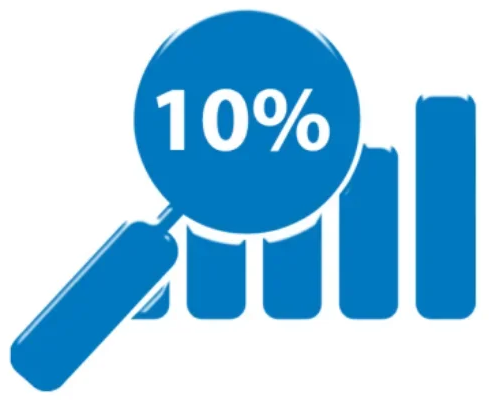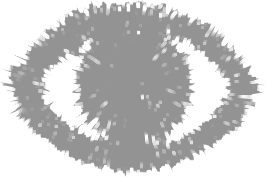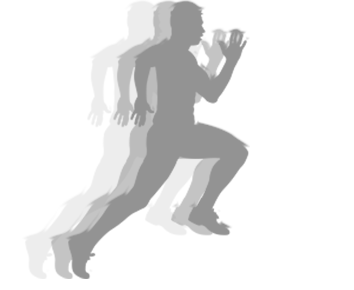GLAUCOMA
INCREASED EYE PRESSURE:
Elevated intraocular pressure (IOP) is a primary risk factor for glaucoma. When the fluid inside the eye fails to drain properly, pressure to builds up, damaging the optic nerve over time.
AGE:
Advancing age is a significant risk factor for glaucoma. Individuals over the age of 60 are at a higher risk of developing the condition, with the risk increasing with each decade of life.
FAMILY HISTORY:
Genetics play a crucial role in glaucoma. If you have a family history of the condition, you may be at a higher risk of developing it yourself.
ETHNICITY:
Certain ethnic groups, such as African Americans and Hispanics, have a higher predisposition to glaucoma and are more likely to experience severe vision loss from the disease.
GLAUCOMA STATISTICS
- The second leading cause of blindness is GLAUCOMA.
- According to the World Health Organization, 4.5 million people are blind due to glaucoma.
- The global disability adjusted life years estimated that glaucoma had increased by 81% from 1990 (378,970) to 2017 (686,094).
- In India, 1.2 million people are affected by glaucoma.

MILLION PEOPLE ARE AFFECTED BY GLAUCOMA, WORLDWIDE

OF THESE PEOPLE BECOME BLIND DUE TO GLAUCOMA
RISK FACTORS OF GLAUCOMA

Are Over 40 Years of Age

Have Family Issue of Glaucoma

Had an eye injury

Have diabetes, heart disease & high blood pressure

Use long term steroid medications

Have poor vision
TYPES OF GLAUCOMA
OPEN ANGLE BLOCKAGE GLAUCOMA
It is the most common type of glaucoma and also called as wide-angle glaucoma or chronic glaucoma. This type of glaucoma develops slowly and causes slow clogging of the drainage canal, resulting in increased pressure in the eye. Open angle glaucoma is painless due to the slow progression of disease and causes no vision changes at first.
Symptoms of open-angle glaucoma: Most people with open-angle glaucoma do not show any obvious symptoms, even if symptoms develop, it’s usually late in the disease. The main sign of open-angle glaucoma is loss or development of blind spots in side vision.
CLOSED ANGLE GLAUCOMA BLOCKAGE
It is also referred to as acute glaucoma or narrow-angle glaucoma. This type of glaucoma develops fast due to the sudden rise of pressure in the eye when the drainage canal gets blocked. This requires immediate medical attention as symptoms are usually very noticeable.
Symptoms of angle-closure glaucoma:
- Eye pain
- Seeing halos around lights
- Blurry vision
- Redness of the eye
- Headache
- Nausea
- Vomiting
GLAUCOMA MANAGEMENT
MEDICATION
After complete eye examination, ophthalmologists will prescribe the suitable medication.
SURGERY
Laser surgery such as trabeculoplasty or iridotomy is done to reduce the fluid blockage and eye pressure using lasers. .
Conventional surgery such as microsurgery is done to drain the fluid and ease pressure by creating a new channel near the drainage canal.
CAUSES OF GLAUCOMA
Glaucoma is an eye disease characterised by increased pressure within the eyeball that can result in gradual vision loss. The increased pressure in the eye occurs due to damage to the optic nerve which carries visual messages to the brain. If the damage worsens, glaucoma can cause total blindness within a few years.


GLAUCOMA DIAGNOSIS
A complete eye examination is one of the ways to diagnose glaucoma. During a glaucoma examination, the ophthalmologist will :
Examine eye drainage channel
Inspect optic nerve
Side vision test
Measure eye pressure
Computer measurement of optic nerve
GLAUCOMA PREVENTION
Regular eye exams and continual follow-up with ophthalmologist

Learn Your Family History

Eating food rich in anti oxidants

Exercise such as walking or jogging at moderate level

Regular intake of prescribed medications
REFERENCES
1.Available at https://www.aao.org/eye-health/diseases/what-is-glaucoma accessed on 16th Oct 2021
3. Ye X, She X, Shen L. Association of sex with the global burden of glaucoma: an analysis from the global burden of disease study 2017. Acta Ophthalmol. 2020 Jan 7. doi: 10.1111/aos.14330. Epub ahead of print. PMID: 31912656.
4. Zhang Y, Jin G, Fan M, Lin Y, Wen X, Li Z, Zeng P, Zheng D, Lan Y. Time trends and heterogeneity in the disease burden of glaucoma, 1990-2017: a global analysis. J Glob Health. 2019 Dec;9(2):020436. doi: 10.7189/jogh.09.020436.
5. Hartleben C et al. J Ophthalmol. 2017;2017:4586763.
6. Nuzzi R, Marolo P, Nuzzi A. The Hub-and-Spoke Management of Glaucoma. Front Neurosci. 2020 Mar 17;14:180. doi: 10.3389/fnins.2020.00180
7. Available at American Academy of Ophthalmology Guidelines https://www.guidelinecentral.com/shop/primary-open-angle-glaucoma-guidelines pocket-card/ Accessed on 16th Oct 2021
8. Available at American Academy of Ophthalmology Guidelines https://www.guidelinecentral.com/shop/primary-open-angle-glaucoma-guidelines pocket-card/ Accessed on 16th Oct 2021
9. Available at International Council of Ophthalmology. ICO Guidelines for Glaucoma Eye Care Available at http://www.icoph.org/downloads/ICOGlaucomaGuidelines.pdf. accessed on 16th Oct 2021